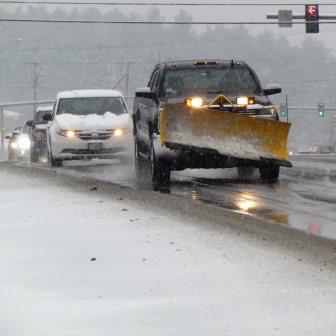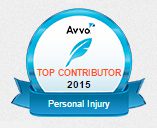
Winter driving conditions challenge even the most experienced drivers.
From multi-car pileups on the interstates to the slipping and sliding fender benders on local roads, snow and ice present collision dangers, unlike any others.
With the exception of brand new drivers who have never ever driven in snow and ice before it can make a person wonder why there are so many accidents each winter. Especially the first time or two it snows every winter.
Do drivers forget that snow and ice make the roads slippery? Are people operating vehicles in too much of a hurry or too distracted to observe that roads are treacherous? Without question, roads become hazardous under snow and ice conditions.
But why are there so many accidents each year, when, after all, it does snow pretty much every year in many areas and winter driving conditions are an annual event.
Top 8 Reasons Accidents Happen in the Snow:
1. Driving Too Fast for Conditions
Speeding, being a “lead foot” is common, motorists see it everywhere especially on rural roads with relatively low limits. It is easy to forget and simply drive way over the limit. But when roadways become icy and snow covered, speed will catch up to you and that is when cars slide off the roadways, hitting whatever is nearby.
2.Failing to clear all Windows
Reduced visibility comes from driving in snow, ice, sleet, freezing rain and other winter mix conditions. People who fail to fully remove snow and ice before heading out on the road increase their chance of an accident by limiting their ability to see with 100% visibility.
3. Failure to Allow More Time
Here’s a simple mathematical fact. If the driver of an average car faces ideal sunny weather and clear dry roads, he or she can travel from point “A” to point “B” in a given amount of time. A second driver goes out in a snowstorm. The road is slippery from ice and snow. Traffic has slowed down. Driver “B” will take longer to drive from “A” to “B”.
This does not take into account the additional time that our second driver will require to clear the snow off the windshield, and perhaps even scrape ice. So, unless the second driver plans in advance and leaves point “A” earlier than usual, this motorist will likely be stressed out, worried about being late.
4. Following Too Closely
With slippery roads, common sense tells us stopping a vehicle takes more time and distance. According to the AAA, the normal dry pavement following distance of three to four seconds should be increased to eight to ten seconds. In other words, normally a driver should mentally “spot” the car immediately in front of them. It should take you a count of three to four seconds until your car reaches that spot on the roadway. This generally represents your braking distance at that speed. If it takes less time to reach that spot, then you are likely to strike that car if it stops suddenly.
The AAA Winter Driving Tips tell us to slow down to a point where it takes eight to ten seconds to reach the point of the car in front if we are to reduce or hopefully eliminate the chances of rear-ending the car in front of us.
How many people do this? Then again why are there so many accidents in winter driving conditions.
5. Stopping in a Lane of Travel
If there is a problem, stopping in the lane of travel presents great danger to traffic approaching from behind. With reduced visibility, bringing a vehicle to a stop in the midst of a travel lane almost begs for trouble. Other vehicles face reduced visibility coupled with increased stopping distances, increasing the changes of a collision.
6. Unnecessary Travel
We’re all busy and under pressure to work and go about our daily activities. But if it is snowing, do we really need to do whatever it is that places us in peril on the highway? Can that shopping trip wait? Is there another time to visit the person on the other end of the trip? Can a meeting be rescheduled? In the worst of winter driving conditions, it’s not bad advice to stay home.
7. Poor Braking
Allow extra time for stopping any vehicle. Slippery conditions increase stopping distances and can cause fishtailing. Usually it is better to slowly pump the brakes rather than jam them on. But, drivers must know their vehicle. Anti-lock brakes or ABI brakes are different and if you need to slow down more quickly it is better to push down hard on the brake pedal and let the system slow the car down for you.
8. Over Acceleration
Accelerate the vehicle more slowly than usual. This should go without saying. Slowly applying the gas allows the vehicle to gain traction without spinning the tires and is best for starting up the car and avoiding skids.
Winter Driving Conditions and Accident Causes
Snow, ice and hazardous roadways are all conditions and not the cause of accidents. In other words, one day the roads are clear and dry. Another day snow and ice cover the same road. Rules of the road require that motor vehicle operators drive safely, taking into consideration current road conditions.
Many vehicle drivers may pass by the same conditions without mishap. The driver not taking present conditions into consideration slides off the road into a tree or into the back of another vehicle. The conditions were present for all of the cars, but for some reason, likely one of the reasons listed above, the last driver failed to account for conditions and caused an accident.
Winter weather leaves roadways snow-covered, wet and icy. These challenges together with reduced visibility create what we call winter weather conditions. When drivers fail to pay the extra attention required by these conditions, they cause accidents.
Car Accidents in Winter Driving Conditions
Snow does not directly cause accidents. Ice does not directly cause accidents. Snow, ic, and related hazards are conditions. Failure to drive reasonably safely when such conditions are present adds up to what the law calls negligence.
Negligence means a failure to observe one’s duty to drive reasonably safely. My law office handles motor vehicle accidents in all parts of Massachusetts and New Hampshire. If you are injured by someone who blames “the snow” or “the icy road”, remember that winter driving conditions were not the cause of the accident so much as the negligence of the other driver who failed to drive safely in view of those conditions.
Related Topics:
Snow, Ice, Bad Drivers & Negligence
Snow and Ice Personal Injury Cases
Can You Sue a City or Town for Failing to Remove Snow Properly?
Sources:
American Automobile Association Exchange, Winter Driving Tips,2016
U.S. Department of Transportation, How Do Weather Events Impact Roads?, May, 2016
Visits: 808





It was interesting when you talked about how drivers have to know their vehicle to determine the best way to brake in snowy or icy conditions. Additionally, any business owners should make sure they do their part by hiring a snow removal service for their parking lots. Everyone could stay safe if drivers and business owners both do their parts to keep everyone safe in extreme conditions!
Can’t disagree with that.